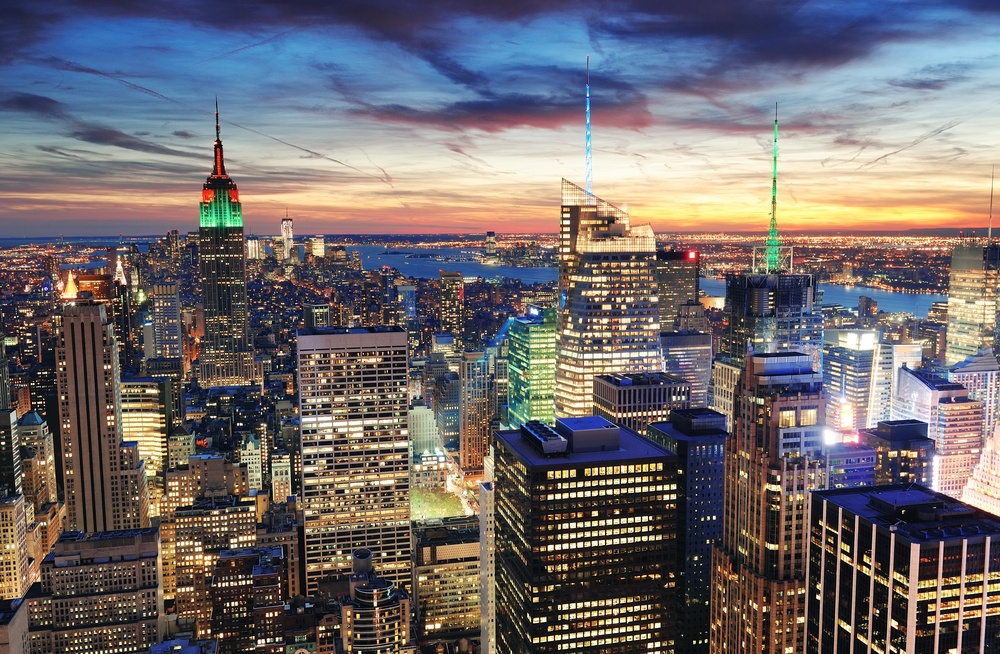Michel Tobias shared his views in Icons of Infrastructure on NY Smartcity

From Deploying Smart Trash Cans To Smart Water Meters And Air Quality Monitors, New York City Is Offering Data-Driven Services To Its Residents.
The NYC Mayor’s Office of Technology and Innovation (MOTI) is carrying out ongoing efforts to turn New York into a smart city. These measures aim to conserve resources such as energy and water, while reducing the environmental impact of NYC and improving the quality of living for its population. Smart city systems are addressing issues such as street lighting efficiency, water quality and conservation, waste management and air quality.
Smart Lighting
Lighting upgrades represent a significant area of opportunity in New York City buildings. Incandescent and first-generation fluorescent lighting are still common, and lighting controls are rarely used – most lighting systems in large buildings are controlled manually.
The NYC government is aware of the energy conservation opportunity through lighting upgrades, and in 2013 they launched the Accelerated Conservation and Efficiency (ACE) program. So far, the program has allocated more than $350 million in funding, across more than 650 buildings owned by 16 city agencies. Many of these projects are LED lighting retrofits, and they are saving over $800,000 per year while preventing over 900 metric tons of GHG emissions.
Lighting savings can be achieving by either reducing the power consumed by fixtures or by using them for less hours each day:
- LED retrofits reduce lighting power, achieving savings that are directly proportional to the power reduction.
- Smart controls can further reduce lighting power through dimming, and can also reduce the hours of operation through scheduling or occupancy sensing.
It is important to note that lighting upgrades and their associated controls may be eligible for cash rebates from the Con Edison incentive program. Property owners can get in touch with a qualified lighting consultant to ensure their upgrade projects use eligible lamps and fixtures.
Smart Water Metering
With a population above 8.5 million, New York City uses 1 billion gallons of water each day. The NYC Department of Environmental Protection is deploying a large-scale Automated Meter Reading (AMR) system to get a better snapshot of water consumption, while giving customers a useful tool to check their water use each day.
AMR units are being installed in more than 800,000 properties, equipped with low-power radio devices that communicate through rooftop-mounted receivers. With this system, the DEP can bill its customers with greater accuracy – 17% of accounts were being billed with estimated data due to the limitations of previous meters, and this has been reduced to less than 3%.
The smart metering system also benefits end users: small users are notified of their water consumption four times per day, while large users can watch live hourly data. AMR units also integrate with a smartphone application that warns customers of potential water leaks when abnormal spikes in water consumption are detected. The Leak Notification program has been highly successful, delivering more than $73 million in savings.
Two effective measures that can be deployed by property owners to reduce their utility water consumption are greywater recycling and rainwater harvesting:
- Greywater is a term that describes wastewater excluding that from toilets, and it can be further used for non-potable purposes such as toilet flushing or irrigation. When these functions are accomplished with recycled wastewater, total water consumption from the utility is reduced.
- Rainwater is essentially free and can be captured to meet many building needs. In fact, NYC properties are required to limit their release of rainwater to the sewage system, with the goal of preventing spillage.
The DEP has also deployed a water quality monitoring system that includes more than 40 monitoring stations throughout NYC. If any water quality issue is detected, the system automatically sends a message to the DEP, allowing a fast response and protecting citizens from polluted water.
Smart Waste Management
The NYC sanitation department is the largest in the world, collecting more than 10,500 tons of trash per day. Picking up garbage from the thousands of trash cans and recycling bins can be quite a logistical challenge: garbage bins can overflow if they are left unattended, but picking up garbage too frequently is a waste of fuel and labor.
The BigBelly is a smart trash can that is being deployed throughout NYC, and it brings significant advantages compared with traditional garbage bins:
- It is equipped with a wireless sensor that monitors trash level, allowing pick-up trips to be scheduled more efficiently.
- The system includes a trash compactor that runs with solar power, allowing the garbage bin to hold five times more waste than a conventional one.
These smart waste management systems not only reduce the frequency of garbage collection, but they also allow it to be scheduled more effectively. The BigBelly improves trash collection efficiency by 50% to 80%, and also contributes to emissions control by reducing the time spent by garbage trucks on the road.
Air Quality Monitoring
The NYC sanitation department is the largest in the world, collecting more than 10,500 tons of trash per day. Picking up garbage from the thousands of trash cans and recycling bins can be quite a logistical challenge: garbage bins can overflow if they are left unattended, but picking up garbage too frequently is a waste of fuel and labor.
The BigBelly is a smart trash can that is being deployed throughout NYC, and it brings significant advantages compared with traditional garbage bins:
- It is equipped with a wireless sensor that monitors trash level, allowing pick-up trips to be scheduled more efficiently.
- The system includes a trash compactor that runs with solar power, allowing the garbage bin to hold five times more waste than a conventional one.
These smart waste management systems not only reduce the frequency of garbage collection, but they also allow it to be scheduled more effectively. The BigBelly improves trash collection efficiency by 50% to 80%, and also contributes to emissions control by reducing the time spent by garbage trucks on the road.
The NYC Department of Health and Mental Hygiene has been conducting air quality surveys since 2008. Monitoring is accomplished with 75 temporary monitoring stations that are installed for a period of two weeks, and 8 permanent air monitors that report data at 15-minute intervals. Thanks to this program, it was possible to determine that low-cost heating oil, used in only 1% of NYC buildings, was causing more air pollution than all the vehicles in the city combined. Fuel oil #4 and #6 have been banned, and fuel oil #2 could be next.
To address the issue of air pollution, Con Edison has introduced attractive rebates for the conversion of heating systems from oil to natural gas. The maximum rebate amount changes depending on the type of property:
- Small residential (1 to 4 dwellings): $2,000 conversion rebate and $1,000 equipment rebate, with a maximum value of $3,000.
- Medium residential (5 to 75 dwellings): $300/apartment conversion rebate and $17,500 equipment rebate, with a maximum value of $40,000.
- Large residential (>75 dwellings) and commercial: $10,000 conversion rebate and $15,000 equipment rebate, with a maximum value of $25,000.
Thanks to the air monitoring program, sulfur dioxide emissions have been reduced by more than 70% in New York City since 2008.
Conclusion
Monitoring is a common denominator among smart city systems, and this is because only a proactive system can be considered smart – solving issues before they materialize generally has a lower cost than fixing the consequences. Monitoring results can also be shared with energy and water consumers so that they can manage their consumption daily, instead of only getting a monthly bill. With engineering, cities can not only conserve energy, but also improve air and water quality while minimizing water use.
This article was published in Icons of Infrastructure on 10 August 2018, the original article can be read over here.

Michael Tobias
Michael Tobias, the Founding Principal of NY Engineers, currently leads a team of 50+ MEP/FP engineers and has led over 1,000 projects in the US
Join 15,000+ Fellow Architects and Contractors
Get expert engineering tips straight to your inbox. Subscribe to the NY Engineers Blog below.


